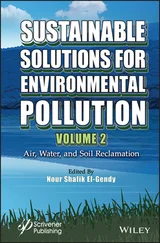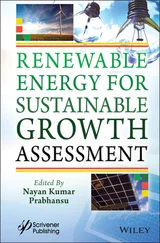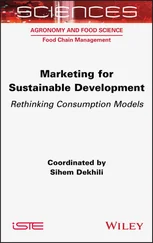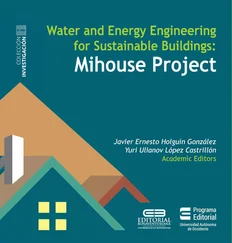Table 3.2 The byproduct of foodstuffs and vegetable oil used in the production of biosurfactants.
Source: Modified based on Kaur et al. [21].
| Raw material/byproduct |
Type of biosurfactant |
Microbial strain |
| Molasses |
Rhamnolipids |
Pseudomonas putida strain B17 |
| Canola oil |
Rhamnolipids |
Pseudomonas sp. strain DSM 2874 |
| Cusi oil |
Sophorolipids |
Candida lipolytica strain IA 1055 |
| Turkish maize oil |
Sophorolipids |
Candida bombicola strain ATCC 22214 |
| Sunflower and Soybean oil |
Rhamnolipids |
Pseudomonas aeruginosa strain DS10–129 |
| Sunflower oil |
Lipopeptide |
Serratia marcescens |
| Soybean oil |
Mannosylerythritol lipid |
Candida sp. strain SY16 |
| Whey and Liquor industry waste |
Rhamnolipids |
Pseudomonas aeruginosa strain BS2 |
In 2004, Bednarski et al. [101] described the use of two Candida yeast strains ( C. antarctica strain ATCC 20509 and C. apicola strain ATTC 96134) for the biosynthesis of glycolipids from waste residues isolated from two oil refineries. They supplemented the fermentation media with 5–12% v/v soap stock and found that yeast strains produced ~7–13 g/l glycolipid content, respectively, whereas 6.6 and 10.5 g/l glycolipid were produced from the use of post‐refinery trans‐fatty acids at 2–5% v/v, respectively. The researchers [101] concluded that adding soap stock seemed to have a beneficial impact on glycolipid biosynthesis.
Nitschke et al. [102] experimented with soybean, cottonseed, babassu, and maize seed oil waste from oil refineries for rhamnolipid synthesis by applying P. aeruginosa LBI strain. Their findings revealed that out of four kinds of oil refinery waste, 2% w/v soybean soap stock could be utilized as the most preferred raw material for 11.7 g/l rhamnolipid production with 26.9 mN/m surface tension and 51.5 mg/l CMC. A sequential factorial method was introduced by Rufino et al. [103] to maximize the development of C. lipolytica in a fermentation medium supplemented with soybean oil as a substrate supplemented with refinery waste, glutamic acid, and yeast extract for biosurfactant production. They reported biosurfactant production with 25.29 mN/m surface tension when a combination of oil residue (6%) and glutamic acid (1%) was used in the fermentation medium. The biosurfactants produced had stability over a more comprehensive pH (2–12), temperature (0–120 °C) and salinity (2–10% sodium chloride) levels. Rufino et al. [103] investigated the cell surface characteristics, including its relation to the development of biosurfactants for diverse uses. This research group [103] cultivated six strains of Candida in fermentation medium supplemented with glucose, corn‐steep liquor, soybean refinery oil residues, peanut oil refinery residues, and n‐hexadecane. Their studies indicated that the biosurfactants produced with yeast could be used to extract hydrophobic substances with 90% capability to eliminate hydrophobic pollutants from soil.
3.6.2 Development of Biosurfactants Using Waste Frying Oil
Several crops are cultivated primarily for the production of foodstuffs for industries, which are then used in industrial processes that generate byproducts [76, 104, 105]. Go et al. [17] reported that increasing population and growing living standards have contributed to increased demand for edible oils, as they supply the necessary nutritional components and energy for physical activities. Edible vegetable oils are usually composed of triacylglycerols (more than 95%) and various fatty acids [106]. The waste cooking oil/frying oil contains several hazardous chemicals that cause health risks when consumers use it or process it. The composition of the used frying oil depends on the food fried in it and also the number of times it is reused; usually, though, recycled oil has 30% higher polar‐hydrocarbons compared to fresh frying oil [107]. Waste frying oil represents a renewable energy source for the production of new industrial products and alternative feedstock in place of pure and expensive chemicals. Haba et al. [108] studied sunflower oil and olive oil waste for rhamnolipid production by using P. aeruginosa 47T2 (2.7 g/l). They reported 0.34 g/g rhamnolipid production with NaNO 3(5 g/l) and waste frying oil (40 g/l).
Researchers [109] developed a modified approach of biosurfactant production under submerged culture conditions through Bacillus subtilis MTCC2423 strain using sunflower bran, paddy bran, waste frying oil (50 g/l), yeast extract (5 g/l) and rock salt (1.7 g/l). They observed that the surface tension decreased in glucose + sunflower bran, paddy bran, and frying oils waste by approximately 29.0, 32.0, and 34.5 mN/m, respectively, while glucose produced the best output (2.1 g/l) of surfactin. It was concluded from their results that the surfactin production process was safe for waste disposal and low‐cost biosurfactant development. Pan et al. [110] had also reported rhamnolipids production using P. aeruginosa strain DG30 in fermentation medium enriched with 5% w/v discarded vegetable oil (w/v) and reported 15.6 g/l of biosurfactant during the fermentation process.
Moreover, the coconut fried oil waste (2%) was used by George and Jayachandran [99] for the synthesis of rhamnolipids using P. aeruginosa strain D, with a recorded emulsification index (EI) of 71% and a yield of 3.55 g/l. It was reported that Mucor circinelloides , grown in culture media with 5% waste frying oil, produced ~12.4 g/l of glycolipids [111]. The obtained glycolipids lowered the surface tension by up to 26 mN/m, produced a consistent 129 mm diameter hollow area in the oil dispersal assay, and proved the emulsification capability of up to 65% of crude oil in marine water. All the results reported in this section provide scientific evidence that waste oil has been a good source of carbon to support microbial growth and production of biosurfactants. The waste substrates used for the production of biosurfactants themselves can reduce the cost of production and can be considered environmentally safe by reducing the pollution problem.
3.6.3 Fruit and Vegetable Industry Byproducts for Biosurfactant Processing
The commercial manufacturing units use vegetable and fruit items (cassava, apple, banana juice and peels, pineapple, mango, carrot, and lime) for the production of various consumer products, but also in this process enormous quantities of residual waste is produced that is rich in carbon content and can be used to produce biosurfactants [112, 113]. The production of cashew nut generates a massive amount of cashew apples as waste, with only 12% being used as a fruit or for commercial processing, whereas more than 70% of cashew apples remain as waste in the soil and cause pollution [114]. Rocha et al. [115] reported that the cashew apple is an invaluable raw material for varied practical applications due to its abundant carbohydrate, vitamin, and mineral content. They evaluated the A. calcoaceticus strain RAG‐1's ability to produce emulsions by utilizing cashew apple juice, which lowered the kerosene surface tension by ~17 and 59% of EI value. They also assessed the potential of ATCC‐10145 strain of P. aeruginosa in the nutrient media enriched with cashew apple juice as having 90–97 g/l of carbohydrate for rhamnolipid production. The maximum surface tension reduction was 29.5 mN/m, whereas the maximum rhamnolipid synthesis was 3.8 g/l, which was obtained by adding peptone (5 g/l) to cashew apple juice. During the research, they analyzed the surfactin synthesis using B. subtilis LAMI008 in nutrient media supplemented with 86.1 g/l carbon content with cashew apple juice.
Читать дальше












